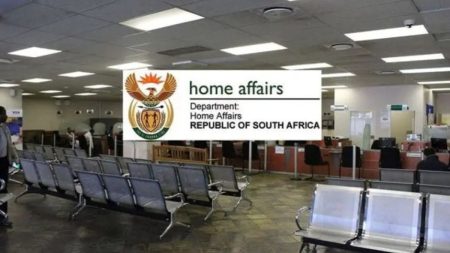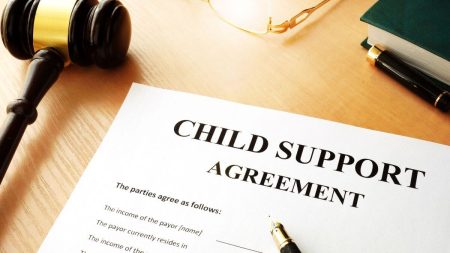Child maintenance is an essential part of family law in South Africa, ensuring that children from separated or divorced parents are provided for financially. Despite its importance, there are many misconceptions and myths surrounding child maintenance in the country.
This article will break down the truth behind these myths and provide a clearer understanding of how the system works in South Africa.
What Is Child Maintenance?
Child maintenance refers to the financial support provided by one parent to the other for the care and upbringing of a child. This support is meant to cover various costs, including food, clothing, education, healthcare, and recreational activities. In South Africa, both parents have a legal obligation to contribute to the financial wellbeing of their children, even if they are no longer living together.
Myths vs. Truths About Child Maintenance in South Africa
Myth 1: Child Maintenance Only Applies to Non-Custodial Parents
One common myth is that child maintenance is only required from the parent who does not have primary custody of the child. This is not true. While it’s true that the parent without primary custody often contributes more in terms of maintenance, both parents are legally obligated to support the child according to their means, regardless of where the child lives.
The Truth:
- Both parents are responsible for contributing to their child’s needs, and maintenance can be paid by either or both parents, depending on the circumstances.
- The parent who has primary custody often receives maintenance, but this does not absolve the non-custodial parent from providing financial support.
Myth 2: Child Maintenance Only Covers Basic Needs
Another misconception is that child maintenance is only for basic necessities, such as food and clothing. While these are certainly important, child maintenance also covers a wide range of expenses related to the child’s overall wellbeing and development.
The Truth:
- Maintenance is calculated based on the child’s age, needs, and lifestyle. It covers a variety of costs, including:
- Education: School fees, uniforms, books, and extracurricular activities.
- Healthcare: Medical expenses, medical aid, and treatment not covered by health insurance.
- Recreation: Sports activities, entertainment, and leisure.
Myth 3: Child Maintenance Is a Fixed Amount
Many people believe that child maintenance amounts are fixed or determined by a set formula. While the amount of maintenance is based on several factors, it is not a one-size-fits-all figure.
The Truth:
- The amount of maintenance is determined by the income of both parents and the needs of the child.
- Factors such as the child’s standard of living before separation, special needs, and the financial ability of both parents are considered.
Myth 4: If One Parent Doesn’t Pay Maintenance, the Other Parent Has No Recourse
It’s a common misconception that if one parent fails to pay child maintenance, the custodial parent has no legal options. Many people believe that they are powerless in such situations.
The Truth:
- South African law provides several avenues for enforcing child maintenance payments.
- If a parent fails to make payments, the custodial parent can approach the Maintenance Court to enforce the order.
- The Maintenance Court can issue various remedies, including wage garnishment, fines, or even imprisonment.
Myth 5: Maintenance Payments End at 18
It is often assumed that child maintenance payments automatically end when the child turns 18, but this is not always the case.
The Truth:
- Child maintenance payments can continue beyond the age of 18, especially if the child is still in full-time education, has special needs, or is financially dependent on their parents.
- The court may determine whether a child is still entitled to maintenance if they are still under the care and support of their parents.
How is Child Maintenance Calculated in South Africa?
In South Africa, the calculation of child maintenance is not an arbitrary process. The Maintenance Court considers several key factors when determining the appropriate amount of support. These include:
- Income of Both Parents: The financial resources of both parents are examined to determine how much each can contribute.
- The Child’s Needs: The court assesses the specific needs of the child, such as healthcare, education, and other essential services.
- Standard of Living: The child’s standard of living before the parents’ separation is taken into account.
- Other Obligations: The court considers whether the parents have other financial responsibilities, such as supporting other children or family members.
The process involves the parent seeking maintenance (usually the custodial parent) applying to the Maintenance Court. If the other parent does not voluntarily provide maintenance, a court order can be issued to enforce payment.
Key Steps to Follow When Seeking Child Maintenance
Attempt to Reach an Agreement: It’s advisable to first try to reach a mutual agreement with the other parent regarding child maintenance. Many disputes can be resolved through negotiation without needing to go to court.
Apply to the Maintenance Court: If an agreement cannot be reached, the next step is to apply to the Maintenance Court. This is done by completing a maintenance application form and submitting it to the court.
Attend the Maintenance Court Hearing: Once the application is submitted, the court will set a date for a hearing. Both parents will be required to attend and provide financial disclosure to help the court determine the appropriate amount of maintenance.
Enforce the Order: If the non-custodial parent fails to comply with the court order, there are several enforcement options, including garnishing wages or even imprisonment.
Common Challenges in Child Maintenance
Despite the legal framework in place, there are several challenges that custodial parents may face in securing child maintenance.
- Non-compliance: Some non-custodial parents refuse or fail to pay maintenance, leading to a need for enforcement measures.
- Difficulty in Determining Income: In some cases, one parent may attempt to hide their income or assets to reduce their maintenance obligation.
- Financial Constraints: Both parents may face financial challenges that make it difficult to provide for the child’s needs as they would like.
Table: Common Maintenance Payment Considerations
| Factor | Consideration |
|---|---|
| Income of Parents | The financial resources of both parents are assessed. |
| Child’s Needs | Education, healthcare, and general living expenses. |
| Age of Child | Younger children may have higher costs in terms of basic needs, while older children may require funds for education and extracurricular activities. |
| Special Circumstances | A child with special needs or one attending tertiary education may require continued support. |
Check also: Proving Paternity for Child Maintenance: A Guide to Securing Rights
Child maintenance in South Africa is an essential aspect of ensuring that children are supported after parents separate. While there are many myths surrounding the system, the reality is that both parents have a legal obligation to contribute financially, regardless of custody arrangements. Understanding the truth about child maintenance and knowing how the process works can help parents navigate the legal system and secure the best outcome for their children.
By busting these myths, we can encourage fair, transparent, and supportive practices for families undergoing separation or divorce in South Africa.










